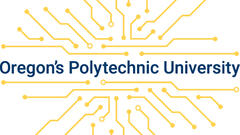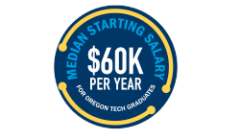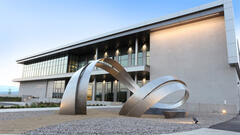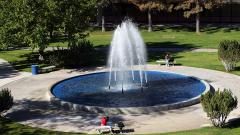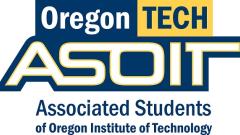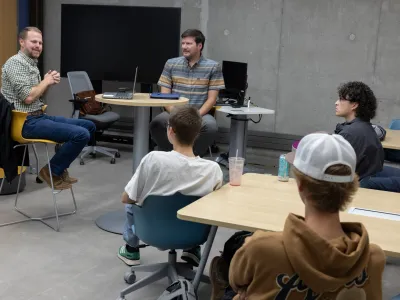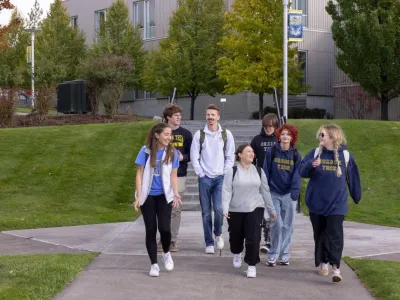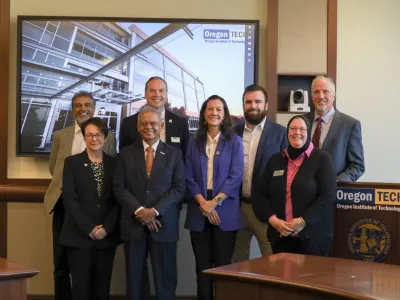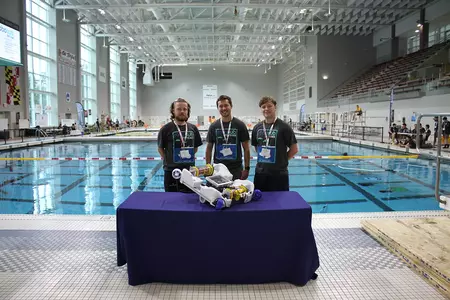
The Oregon Tech Autonomous Unmanned Vehicle Systems and Intelligent Robotics (AUVSIR) team qualified for the semi-finals in the 25th annual RoboSub competition at the University of Maryland in College Park, Maryland, this summer. RoboSub is an international robotics competition where student teams design, build, test, and operate their own robotic submarines in challenging underwater environments.
This year, AUVSIR team members Mauricio Huntoon DeRoche (junior, Mechanical Engineering), Theodor Giles (senior, Environmental Science), and Austin Morris (senior, Mechanical Engineering) joined 38 teams from 11 countries at RoboSub.
During the competition, AUVSIR was challenged to design, build, and test an autonomous submarine. Once the sub is released, there is no human intervention.
Giles explained that the week is busier than one would expect.
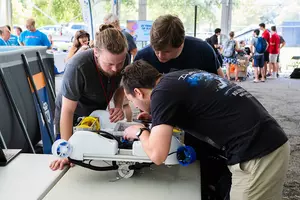
"The competition is only a week-ish long, and the competition is more than half of the week, so we had a very tight schedule for testing and making sure our sub was going to work," he said. "There was a main workspace we all huddled in, where we tried to be for at least 75% of the day. We were repairing, augmenting, mounting, and especially coding, as we can do a significant amount of testing out of the water.".
With a smaller budget than other teams, AUVSIR managed to impress the competition with 3D-printed parts. "At first glance, our sub was one of the less impressive vehicles in the competition, but given our limited budget and manpower, I am pleased with how things turned out," Morris said. "Our use of low-infill 3D printed parts for buoyancy was a move that many teams complimented us on."
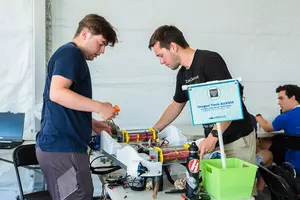
By the end of the testing days, the team had issues due to water damage from earlier runs. With only three out of eight thrusters working, their goal was to qualify with two thrusters.
"Instead of doing depth control, because our vertical thrusters were not working, we filled up our front buoy, so our rear was more buoyant than our front. So on our run the sub was oriented perfectly toward the waypoint, and we maintained heading, successfully reaching the waypoint and qualifying. This is something that some other teams couldn't accomplish, including teams that had many more members, more funding, as well as actually having functional thrusters," Giles explained.
Huntoon DeRoche shared, "We managed to successfully make it past the first round by qualifying via the completion of a task autonomously. This was a big step for our team."
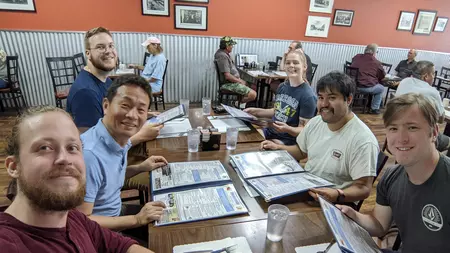
Eduardo Ruiz, and Mauricio Huntoon DeRoche
AUVSIR was supported from home by Noah Azzopardi, Lauren Sadrin, Scott Cooke, Eduardo Ruiz, Chance Alford, JayCe Leonard, and Colton Rhodes. "These members were part of our self-paid internship for weeks before, because many of us care deeply about the competition, but we were only able to fly three people in the end," Giles said. "We're constantly looking for new members that are dedicated and ready to learn so that we can make bigger and badder autonomous robots in the future."
This is the fourth year AUVSIR has participated in the competition and the first competition for this team. They said the lack of veteran members made the competition difficult, but they hope achieving the semi-final finish will lead to increased funding and help with recruitment.
"This year we need a much stronger focus on recruitment and will put more energy into advertising the club," Morris said. "With a larger team and budget, we will hopefully be able to design and build a new sub design at a faster pace, which will allow us to work out any potential issues long before next year's competition comes around."
To learn more about the competition, visit https://robonation.org/programs/robosub/ or the AUVSIR Instagram at https://www.instagram.com/oit.auvsir/.
###

